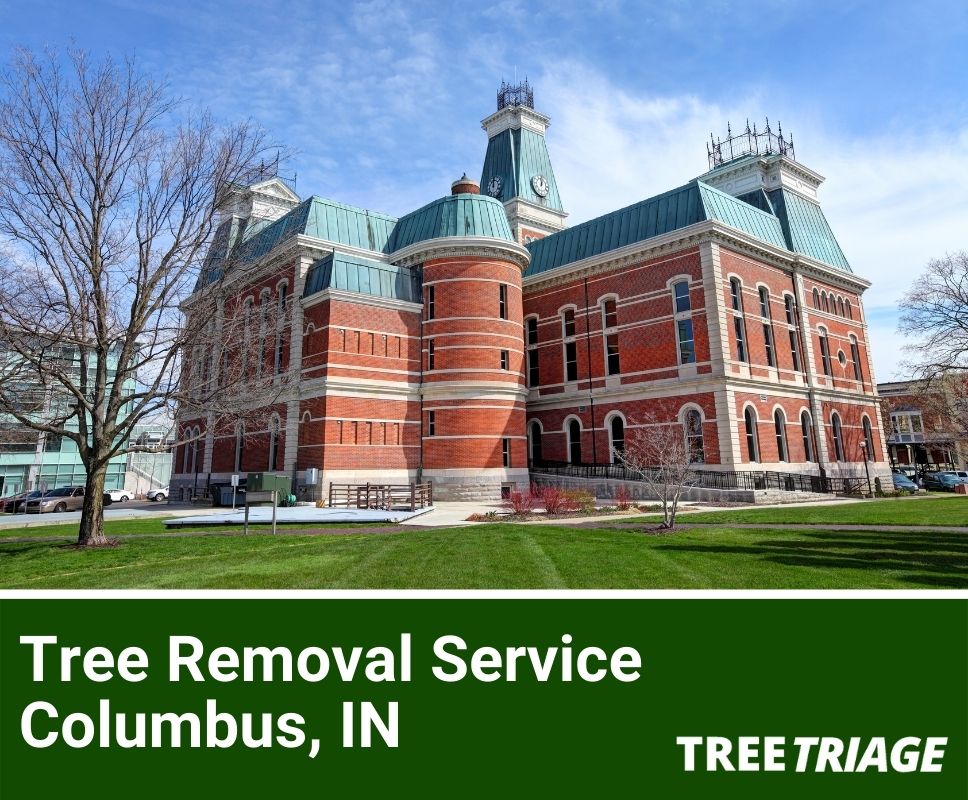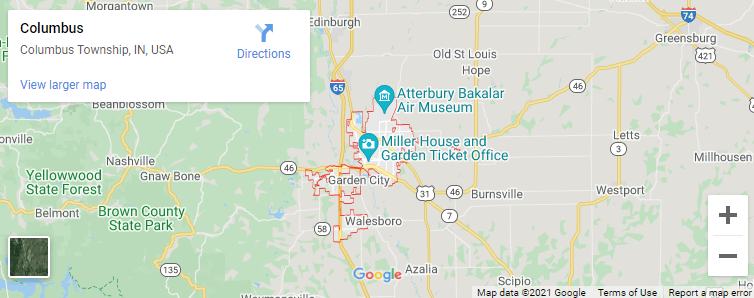Contents (Click To Jump)
- 1 What Are the Most Common Tree Issues in Columbus?
- 2 Does the City of Columbus Provide Any Assistance in Tree Removal Problems?
- 3 Who Is Responsible for Fallen Tree Removal in Columbus?
- 4 How Does the Soil Affect Trees in Columbus?
- 5 Does Weather Affect Tree Health in Columbus?
- 6 What if Dead Trees Are Near Power Lines in Columbus?
- 7 How Much Does Tree Removal Usually Cost in Columbus?
What Are the Most Common Tree Issues in Columbus?
The city of Columbus is the perfect mixture of natural views and modern city life. You’ll find gorgeous greens in almost any direction you look. The town seamlessly blends stunning architecture with plenty of adventure. In the last decade, the city government has worked hard to implement routine planting processes along with consistent trimming and pruning for its scattered canopy of trees, encouraging homeowners to take pride in the natural hardwoods throughout Columbus. This means that even with a push for more greenery, the city isn’t able to escape natural insects and diseases that are harmful to trees.
Gypsy Moth
If you’ve ever read The Hungry Caterpillar, then you’re probably not going to be too surprised to find out that the gypsy moth is the living version of the tale. The pest is known for being an invasive species that causes defoliation from eating the leaves on trees. When infested, you may notice tiny sacks begin to show up on trees and it may not seem concerning. This is often how the pest becomes overlooked and can spread so rapidly. Once the moth transitions into a caterpillar, it relies on its host tree to feed and gather nutrients. This likely won’t kill a tree right away, but if the culprit comes back year after year, it can stunt growth and deplete the tree of much-needed nutrients.
Emerald Ash Borer
Known as one of the most invasive and prominent tree killers all across the US, Columbus trees are not free from attacks by the emerald ash borer (EAB). The beetle feeds on foliage, bores holes beneath the bark of trees, and has killed hundreds of thousands of ash trees throughout the country. As the EAB lays eggs, the boring beetle becomes more than a nuisance. Rapidly spreading and stunting the growth of trees, the borer tends to completely deplete host trees of their nutrients. An infestation can reduce a tree’s ability to transfer water and nutrients, causing dieback, wilt, and much more.
Aphids
Most of the time, you may not notice that there’s an aphid infestation attacking the trees on your property. The insect often blends in with branches and leaves, which can be hard to spot if you’re not looking closely. Aphids cause damage to trees by sucking fluid from them, and they also commonly carry fungal diseases that further harm the host tree. While aphids aren’t typically the final straw for trees, their ability to secrete honeydew and attract other insects and nuisances commonly leads to defoliation, stunted growth, and the death of trees.
Does the City of Columbus Provide Any Assistance in Tree Removal Problems?
Historically, the city of Columbus has not held a long-term urban forestry department, but has recruited help from the Public Works and Parks and Recreations Department to assist in pruning, trimming, and removing trees at risk on public property. The city has also partnered with DRG experts to inventory trees throughout the city and is working to create a more comprehensive plan when it comes to maintaining its trees. The plan includes planting maple trees to provide an additional canopy for the town and promote tree health along with more routine maintenance periods.
While the city doesn’t currently provide removal assistance for trees located on private property, they do try to assist with removing trees located in the right-of-way that could potentially block public streets, damage sidewalks, or pose a risk to the public. As the city begins to implement many of the suggestions provided by DRG’s analysis, we could see an urban forestry department grow to assist in the removal of trees on private property in the future.
Who Is Responsible for Fallen Tree Removal in Columbus?
The city of Columbus may be willing to help remove trees that pose a risk to public property, but trees that are located entirely on private property are typically the responsibility of the homeowner. So when they fall, you may be curious if you’re still liable for the removal.
If you’re a homeowner?
In Columbus, tree ownership falls on the homeowner of the property where the tree resides. Whether it falls due to natural causes or negligence, if a tree on your property falls on your property, then you’re liable to schedule and pay for the removal. In some situations, if a tree falls due to natural causes, you can file a claim with your homeowners insurance to see if they’ll help pay for the removal and any damage caused due to the fall.
If you’re a renter?
Unless agreed upon in your current lease, the responsibility of tree removal remains with the property owner. You may be responsible for basic yard maintenance, such as cutting grass or keeping weeds to a minimum, but the care of trees on the property is the homeowner’s. If a tree is showing signs of decay, be sure to alert your landlord via text or email so that there’s written proof you did your due diligence in reporting the issue.
If you’re a landlord?
Most lease agreements mention basic lawn care, but if it’s not clarified that the tenant maintains and cares for trees on the property, then you’re still responsible for handling the removal of a tree, should it fall. To prevent unexpected falls due to negligence, you can request them to walk around the property every so often to check for decaying trees, just be sure to schedule that time with your tenant.
If you’re a neighbor?
Should you come home to find that a tree from neighboring property fell across the boundary line onto your property, you may be responsible for having it removed. The state of Indiana has spent years defining tree law and most often follows the logic of or theory of act of God considerations when a tree falls. This means that if a tree falls due to natural causes, your neighbor is not responsible for the tree. If it falls due to negligence, then you can hold them responsible for the removal.
How Does the Soil Affect Trees in Columbus?
When you view Bartholomew County as a whole, the soil in the area is a mixture of poor to moderately draining. The small portion of the county that makes up Columbus has a mixture of loamy, clayey, silty, and sandy soils. Most of the soil in the area is filled with nutrients but is slow to drain, which can leave plants and trees overly hydrated during extended periods of rain and storms. Due to how fine the soil is in the city, it can be difficult to plant and grow trees or plants that are not native to the area.
Does Weather Affect Tree Health in Columbus?
Throughout the year, the weather in Columbus is naturally cooler more often than it is warm. Summers are a mixture of humidity and days that feel muggy outside, while fall and winter are often wet and cold. Due to the moisture in the air year-round, trees don’t often experience dehydration in the city. The driest periods are often found in the middle of spring, and even during those few months, it’s never too cold or too hot, leaving the town feeling quite comfortable. Overall, this type of weather can be beneficial for young trees as they grow, ensuring that they’re able to gain and retain moisture as often as needed, without experiencing leaf scorch or dehydration.
What if Dead Trees Are Near Power Lines in Columbus?
Power lines are extremely helpful, but they’re also incredibly dangerous at times. Most of us are familiar with the danger of power lines following storms, but did you know that allowing trees to grow too close to active lines is just as dangerous? Power lines often carry anywhere from 20,000 volts of electricity to over 200,000 volts, making them the last thing you want to come into contact with. When you notice limbs or trees that are decaying near power lines, always assume that it’s an active line and remember that it’s important that you report them to the city so that they can be removed quickly to reduce hazards and potential risks.
How Much Does Tree Removal Usually Cost in Columbus?
The process of carrying out a tree removal project is planned based on several variables that help define the complexity and severity of each project, making each job unique. In Columbus, the average removal service for a medium or average-sized tree can run between $550 to $580. This cost takes into account the preparation, planning, labor, equipment, and removal of the actual tree. Most tree removal prices won’t include any local inspection or permits that are required, stump removal, or extra services such as landscaping. Those additional services will likely increase the overall cost of having the tree removed.
Tree Size and Diameter
This one probably seems a little like common sense, but the size and diameter of a tree are key factors in the pricing of removal. A tree that’s shorter than your average person is going to cost much less to remove compared to a tree that’s twice the height of your house. Size also takes into consideration the type of tree, mainly relying on hardwoods or softwoods as a determining factor. Hardwoods tend to weigh much more than softwoods, meaning that more harnesses and precautions will be used throughout the removal process to ensure everyone’s safety. Plus, trees that are heavier and larger in diameter are likely going to require more heavy-duty machinery to haul the lumber off.
Tree Location
One of the many factors that dictate the cost of removing a tree is the location of the tree. It’s important to note whether the tree being removed is near a home, power line, far off the road, down or up a hill, and any other variables that impact the location. Depending on how far a tree is from the road and what’s directly surrounding it, different equipment or precautions may be used to properly dispose of and remove it, which can lead to slight increases for more complex removal services.
Emergency Services
There’s a major difference in scheduling to have a tree removed from your backyard and calling to schedule to have a tree removed that fell on your house. While every tree removal job is unique, a tree that’s caused structural damage is considered to be much more of an urgent concern compared to a tree that’s fallen on open property. Tree removal jobs that need to happen outside of normal business hours, such as removal projects following major storms, may cost a little more due to being considered a rushed or emergency service.






